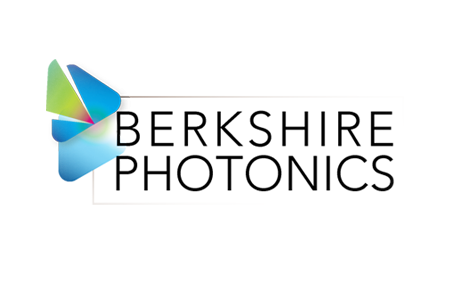Home » Product Categories » Specialty Optical Fiber and Cable
Specialty Optical Fiber and Cable
> SUBCATEGORIES:
Berkshire Photonics is the industry’s Specialty Fiber Expert. We are well-versed in the properties, capabilities and uses of non-telecommunications silica fibers. Whether the fiber solution you’re seeking involves fiber that is…
- Single mode or multimode,
- All-silica or polymer-clad,
- Step-index or graded-index,
- High-OH or low-OH,
- Small-core or large core,
- Polarization-maintaining,
- Or features any of the many coating and buffer types available…
Berkshire Photonics is where you’ll find it. A sampling of the specialty fiber types we offer includes:
Graded Index Multimode (GIMM) Optical Fibers

A multimode fiber guides multiple modes of light along its length. “Modes” can be thought of as the “pathways” that light can take while propagating along a length of fiber. “Graded index” (GI) refers to the refractive index profile across the fiber core. Instead of changing abruptly at the core/clad interface (as in a step-index fiber), the refractive index profile of a GI fiber varies continuously as one moves from the core center to the core/cladding interface. This acts to guide modes in a sinusoidal manner, reducing modal dispersion, and permitting higher bit rates to be transmitted.
Graded index multimode fibers are widely used in short-haul (<1 km) telecom and datacom applications where the bandwidth-length product does not require the precision or warrant the higher cost of single mode fiber.
Berkshire Photonics stocks not only industry-standard 50/125µm (OM2/OM3/OM4) and 62.5/125µm telecom/datacom-grade fibers and cables, also less commonly-used GI fibers with larger core diameters (100 to 300µm), with acrylate, polyimide and other buffer options.
All-Silica Step Index Multimode (SIMM) Fibers
All-silica step index multimode fibers (also referred to as “silica/silica” fibers) feature a pure silica glass core and a doped silica glass cladding with a lower refraction index. They exhibit high temperature resistance, lower loss than other large-core fiber types, high core-to-cladding ratios and excellent power-handling capabilities.
They are widely used in medical, sensing and spectroscopy applications, and for laser delivery in industrial settings.
Core diameters from 50µm to 1000µm (or more) are available with NA= 0.22 (typical) , with high‑OH and low-OH variants suitable for use at wavelengths from 300-1200µm and 400-2200µm, respectively.
Hard Polymer Clad Fiber (H-PCF)

Hard polymer clad fibers (H-PCF) consist of a silica core with a hard polymer cladding material. These fibers are characterized by high mechanical strength, high core-to-clad ratio, higher NAs than all-silica types, wide operating temperature range, suitability for use in harsh environments, ease of handling, and compatibility with epoxyless crimp-and-cleave connectorization methods.
H-PCF fiber is used for data communications in challenging industrial environments, laser delivery in medical applications, spectroscopy, remote sensing, and a host of further uses. Most H-PCF fibers feature step index core profiles, and are less costly than all-silica fibers.
H-PCF fibers are available with core diameters from 200µm to 1000µm with NA= 0.37 (typical), with high‑OH and low-OH variants suitable for use at wavelengths from 300-1200µm and 400-2200µm, respectively.
Dual-clad Multimode Optical Fibers
Dual-clad fiber, as the name suggests, contains two cladding layers instead of just one. The inner cladding layer surrounding the core is doped silica glass, and the outer cladding is a hard polymer material. Typically, dual-clad fibers have lower numerical apertures (NA= 0.22), but offer higher overall power-handling capabilities at only a nominally higher cost.
Like all large-core multimode fibers, dual-clad fibers are available with several buffer/jacket options, including Tefzel, silicone, nylon, ETFE, etc.
High-Temperature Polyimide-Coated Optical Fibers
Many of the customers that Berkshire Photonics serves need fibers that can withstand elevated temperatures. The high-temperature ratings for most fibers are limited by the coating or buffer material; acrylate coatings are only rated to +85°C.
For more extreme environments, polyimide-coated fibers rated from -65°C to +300°C. are the preferred solution.
For assemblies requiring additional protection or ruggedization, polyimide tubing or stainless steel monocoil tubing are further options offered by Berkshire Photonics.
Polarization Maintaining (PM) Fibers

Polarization Maintaining (PM) fibers are engineered to maintain the polarization state of light as it travels the length of a fiber. This is accomplished by the introduction of stress-inducing elements in the cladding which induce birefringence in the fiber core.
PM fiber is crucial in applications that rely on the knowledge or control of the polarization state of light in a fiber, such as fiber optic gyroscopes, sensing applications, or coherent communications.
Berkshire Photonics is experienced in the handling, connectorization, splicing, and measurement of polarization maintaining fiber, and can respond to customer requests quickly and professionally.
Summary
Berkshire Photonics has a thorough knowledge and deep understanding of specialty optical fiber and cable. Our customers challenge us daily to help them with their designs, and we are continually expanding our repertoire. We look forward to helping you with your next challenge!
